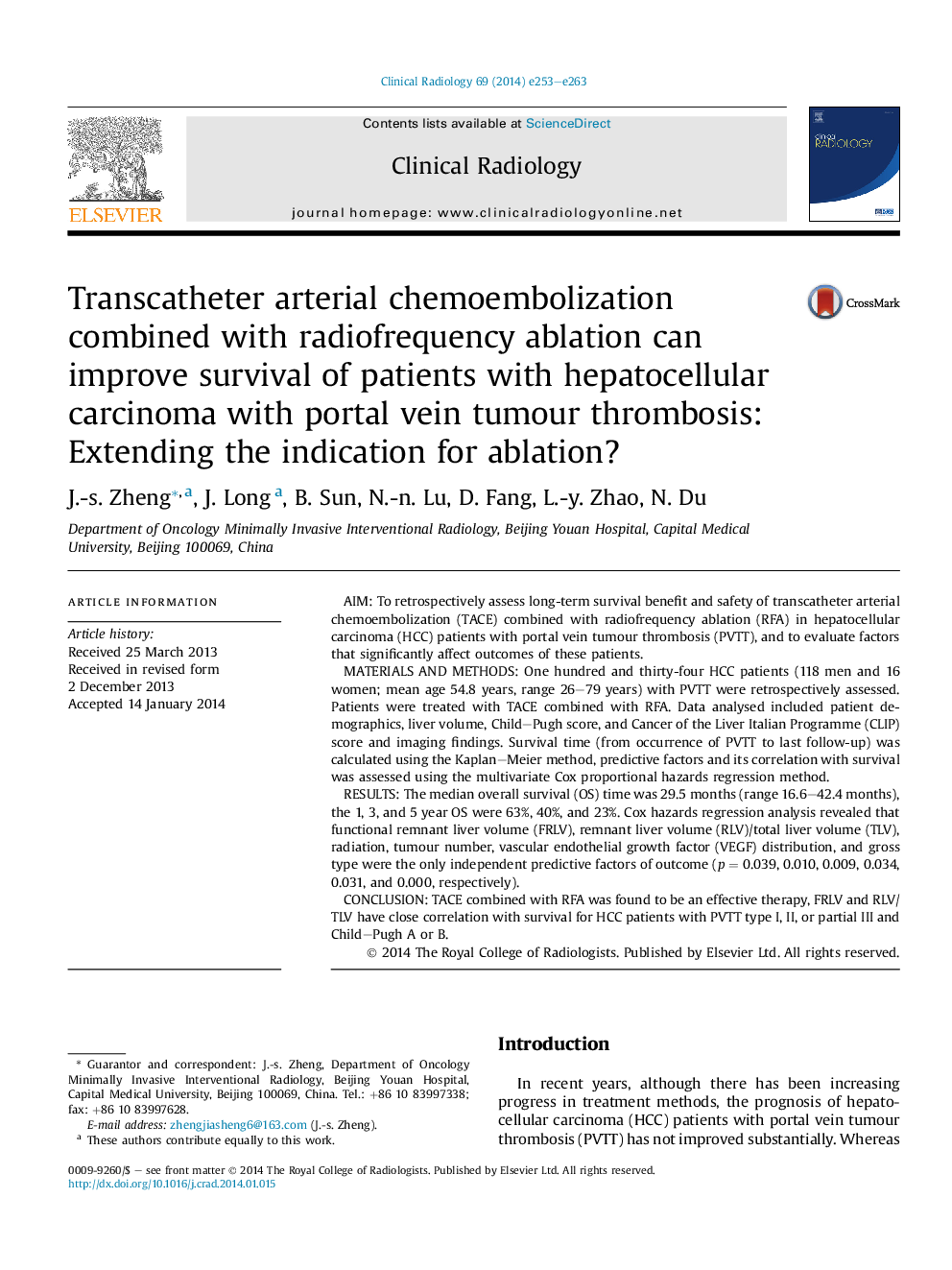| Article ID | Journal | Published Year | Pages | File Type |
|---|---|---|---|---|
| 3981747 | Clinical Radiology | 2014 | 11 Pages |
AimTo retrospectively assess long-term survival benefit and safety of transcatheter arterial chemoembolization (TACE) combined with radiofrequency ablation (RFA) in hepatocellular carcinoma (HCC) patients with portal vein tumour thrombosis (PVTT), and to evaluate factors that significantly affect outcomes of these patients.Materials and methodsOne hundred and thirty-four HCC patients (118 men and 16 women; mean age 54.8 years, range 26–79 years) with PVTT were retrospectively assessed. Patients were treated with TACE combined with RFA. Data analysed included patient demographics, liver volume, Child–Pugh score, and Cancer of the Liver Italian Programme (CLIP) score and imaging findings. Survival time (from occurrence of PVTT to last follow-up) was calculated using the Kaplan–Meier method, predictive factors and its correlation with survival was assessed using the multivariate Cox proportional hazards regression method.ResultsThe median overall survival (OS) time was 29.5 months (range 16.6–42.4 months), the 1, 3, and 5 year OS were 63%, 40%, and 23%. Cox hazards regression analysis revealed that functional remnant liver volume (FRLV), remnant liver volume (RLV)/total liver volume (TLV), radiation, tumour number, vascular endothelial growth factor (VEGF) distribution, and gross type were the only independent predictive factors of outcome (p = 0.039, 0.010, 0.009, 0.034, 0.031, and 0.000, respectively).ConclusionTACE combined with RFA was found to be an effective therapy, FRLV and RLV/TLV have close correlation with survival for HCC patients with PVTT type I, II, or partial III and Child–Pugh A or B.
